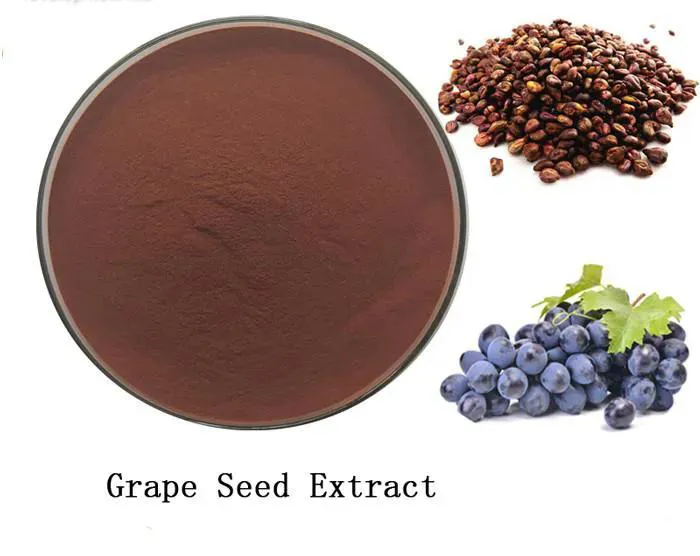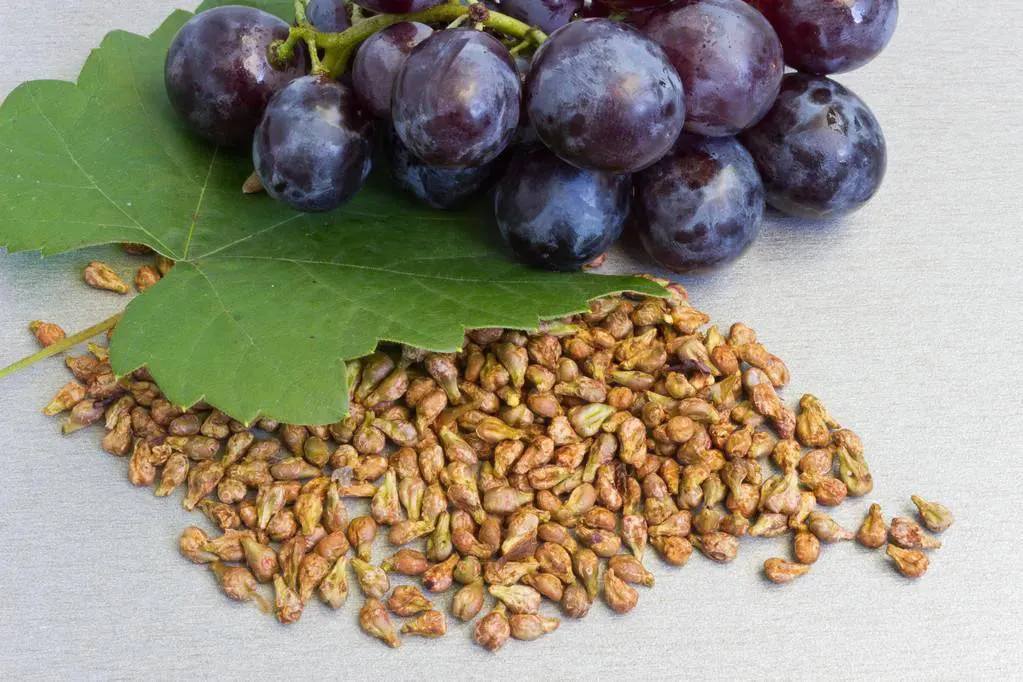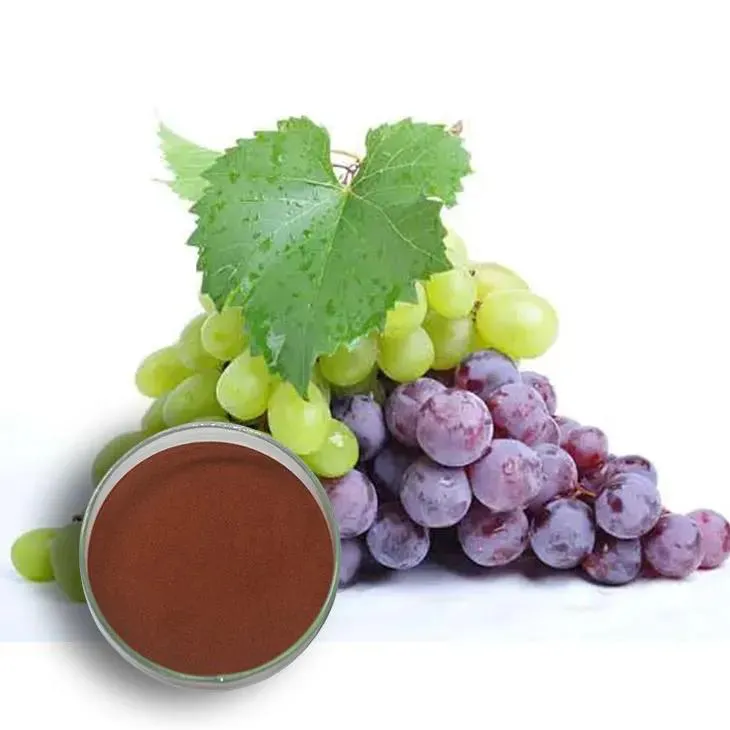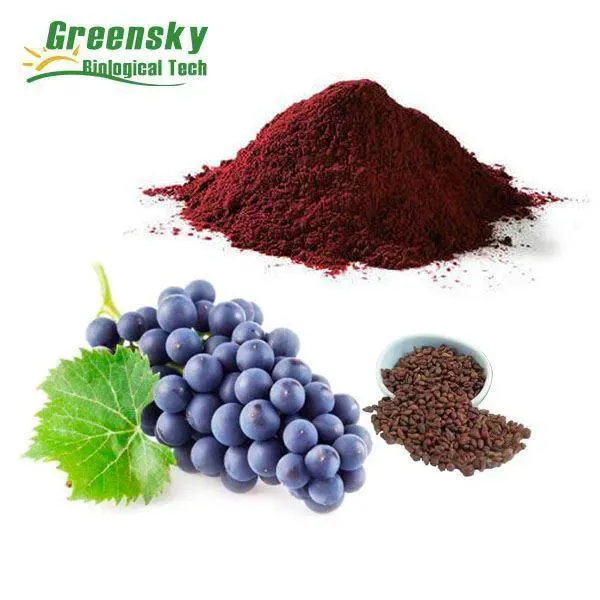- 0086-571-85302990
- sales@greenskybio.com
Navigating the Market: Insights and Predictions for the Grape Seed Extract Industry
2024-08-06

1. Introduction
The Grape Seed Extract industry has been steadily growing in recent years, driven by increasing consumer awareness of its potential health benefits. Grape Seed Extract is rich in antioxidants, particularly proanthocyanidins, which are believed to have various positive effects on human health, such as reducing inflammation, improving cardiovascular health, and protecting against oxidative stress. This article aims to provide a comprehensive analysis of the Grape Seed Extract industry, covering multiple aspects from supply - chain analysis to future predictions.

2. Supply - Chain Analysis
2.1 Raw Material Sourcing
The primary raw material for grape seed extract is, of course, grape seeds. Grape seeds are a by - product of the winemaking industry, which means that the availability of grape seeds is closely linked to the production of wine. Major wine - producing regions around the world, such as France, Italy, and California in the United States, are also potential sources of grape seeds for extraction. However, the quality of grape seeds can vary depending on factors such as grape variety, growing conditions, and winemaking processes.
2.2 Extraction Processes
There are several methods for extracting grape seed extract, including solvent extraction and supercritical fluid extraction. Solvent extraction is a more traditional method, but it may leave some solvent residues in the final product if not properly controlled. Supercritical fluid extraction, on the other hand, uses substances such as carbon dioxide in a supercritical state to extract the active compounds from grape seeds. This method is generally considered to be more environmentally friendly and can produce a higher - quality extract. The choice of extraction method can significantly impact the cost, quality, and marketability of the grape seed extract.
2.3 Manufacturing and Packaging
Once the grape seed extract is obtained through extraction, it undergoes further manufacturing processes such as purification, concentration, and formulation. These processes are crucial for ensuring the consistency and quality of the final product. In terms of packaging, grape seed extract is typically sold in various forms, including capsules, tablets, and liquid formulations. The packaging needs to protect the product from factors such as light, moisture, and oxygen, which can degrade the active compounds in the extract.

3. Quality Control Issues
3.1 Standardization of Active Compounds
One of the major challenges in the grape seed extract industry is the standardization of active compounds. Proanthocyanidins, the key antioxidants in grape seed extract, can vary in their chemical composition and concentration depending on the source of the grape seeds and the extraction method used. To ensure the effectiveness and safety of the product, it is essential to establish clear standards for the content of active compounds in grape seed extract.
3.2 Purity and Contaminant Control
As with any dietary supplement, purity is a critical factor in grape seed extract. Contaminants such as heavy metals, pesticides, and microbial organisms can pose risks to consumers. Manufacturers need to implement strict quality control measures to detect and eliminate these contaminants during the production process. This includes sourcing high - quality raw materials, using proper extraction and purification techniques, and conducting regular testing for contaminants.
3.3 Shelf - Life and Stability
The stability of grape seed extract over time is another important quality control issue. As mentioned earlier, factors such as light, moisture, and oxygen can cause degradation of the active compounds in the extract. Manufacturers need to determine the appropriate shelf - life for their products based on stability studies and ensure that the packaging provides adequate protection to maintain the product's quality throughout its shelf - life.

4. Impact of Regulatory Policies
4.1 Dietary Supplement Regulations
In many countries, grape seed extract is classified as a dietary supplement. Dietary supplement regulations vary from country to country, but they generally aim to ensure the safety, quality, and accurate labeling of these products. For example, in the United States, the Food and Drug Administration (FDA) has regulations governing the manufacturing, labeling, and marketing of dietary supplements. Manufacturers are required to comply with Good Manufacturing Practice (GMP) regulations and provide accurate information about the ingredients, dosage, and potential benefits and risks of their products on the label.
4.2 International Trade Regulations
For the grape seed extract industry, international trade regulations also play a significant role. Tariffs, import/export restrictions, and quality standards imposed by different countries can affect the global supply - chain and market access of grape seed extract products. For instance, some countries may require specific certifications or testing procedures for imported grape seed extract, which can add additional costs and time - consuming processes for exporters.

5. Market Forces Shaping the Industry
5.1 Consumer Demand
Consumer demand is a major driving force behind the growth of the grape seed extract industry. As consumers become more health - conscious, they are increasingly seeking natural products with potential health benefits. Grape seed extract, with its antioxidant properties and reputation for promoting various aspects of health, has attracted a growing number of consumers. The demand for grape seed extract is also influenced by trends such as the popularity of functional foods and dietary supplements, as well as the increasing awareness of preventive healthcare.
5.2 Competition Among Manufacturers
The grape seed extract market is becoming increasingly competitive, with numerous manufacturers vying for market share. Competition is not only based on price but also on product quality, brand reputation, and innovation. Manufacturers are constantly striving to improve their extraction processes, develop new formulations, and enhance the quality and effectiveness of their products to stand out in the market. This competition can lead to increased innovation and improved product offerings for consumers.
5.3 Pricing and Profitability
Pricing is a crucial factor in the grape seed extract industry. The cost of raw materials, production processes, and regulatory compliance all contribute to the final price of the product. Manufacturers need to balance profitability with affordability to ensure that their products are competitive in the market. Factors such as economies of scale, production efficiency, and brand value can also influence the pricing and profitability of grape seed extract products.
6. Innovation in the Grape Seed Extract Industry
6.1 New Extraction Technologies
Research and development in the field of grape seed extract are constantly exploring new extraction technologies. These new technologies aim to improve the efficiency, quality, and environmental sustainability of the extraction process. For example, some researchers are investigating the use of novel solvents or extraction methods that can selectively extract the most beneficial compounds from grape seeds while minimizing the use of harmful chemicals and reducing energy consumption.
6.2 Product Formulation and Delivery Systems
In addition to extraction technologies, innovation is also occurring in product formulation and delivery systems. Manufacturers are developing new forms of grape seed extract products, such as nano - emulsions or liposomal formulations, which can improve the bioavailability of the active compounds. These new formulations can enhance the absorption and effectiveness of grape seed extract in the body, potentially expanding its applications in the healthcare and nutraceutical fields.
6.3 Expansion of Applications
Grape seed extract is not only limited to the traditional areas of dietary supplements and health products. There is growing research into its potential applications in other fields, such as cosmetics and pharmaceuticals. In cosmetics, grape seed extract is being explored for its antioxidant and skin - protecting properties, while in pharmaceuticals, it may have potential as a component in drugs for treating certain diseases. The expansion of applications can open up new market opportunities for the grape seed extract industry.
7. Consumer Awareness and Education
7.1 Importance of Consumer Education
Consumer awareness and education play a vital role in the growth and development of the grape seed extract industry. Many consumers may not be fully aware of the potential benefits, proper usage, and safety considerations of grape seed extract. Educating consumers about these aspects can help them make informed decisions and increase their confidence in using grape seed extract products.
7.2 Marketing and Promotion Strategies
Manufacturers and marketers in the grape seed extract industry use various marketing and promotion strategies to raise consumer awareness. These include advertising, social media marketing, and participation in health - related events. However, it is important to ensure that marketing claims are based on scientific evidence and comply with regulatory requirements to avoid misleading consumers.
8. Predictions for the Future Development of the Grape Seed Extract Industry
8.1 Continued Growth
Given the increasing consumer demand for natural health products and the growing body of scientific evidence supporting the benefits of grape seed extract, it is expected that the industry will continue to grow in the coming years. The market is likely to expand both in terms of volume and value, as more consumers incorporate grape seed extract into their daily health regimens.
8.2 Regulatory Strengthening
As the industry grows, regulatory authorities are likely to strengthen their oversight of the grape seed extract industry. This may include more stringent quality control requirements, updated labeling regulations, and stricter enforcement of safety standards. Manufacturers will need to stay updated with regulatory changes and ensure compliance to maintain their market position.
8.3 Technological Advancements
Future technological advancements in extraction, formulation, and application areas are expected to drive the development of the grape seed extract industry. New extraction technologies may lead to higher - quality and more cost - effective products, while innovative formulations and delivery systems can expand the market potential of grape seed extract. Additionally, further research into new applications may open up previously untapped markets.
9. Conclusion
The grape seed extract industry is a dynamic and growing sector, influenced by a variety of factors including supply - chain dynamics, quality control, regulatory policies, market forces, innovation, and consumer awareness. By understanding these aspects and making informed decisions, industry players can navigate the market successfully and contribute to the continued growth and development of the grape seed extract industry. As the industry moves forward, it is expected to face both challenges and opportunities, but with the right strategies in place, it has the potential for a prosperous future.
FAQ:
Q1: What are the main components of the grape seed extract supply - chain?
The grape seed extract supply - chain mainly consists of grape suppliers, extraction facilities, distributors, and end - users. Grape suppliers provide the raw material, which is then processed in extraction facilities to obtain the grape seed extract. Distributors play a role in getting the product to various markets, and end - users can be in industries such as food, cosmetics, and pharmaceuticals.
Q2: How important is quality control in the grape seed extract industry?
Quality control is extremely important in the grape seed extract industry. High - quality grape seed extract should have a consistent composition, free from contaminants and impurities. Poor quality control can lead to products with inconsistent efficacy, which may not meet the requirements of different applications. In addition, in industries like pharmaceuticals and food, strict quality control is required to ensure consumer safety.
Q3: What are the regulatory policies affecting the grape seed extract industry?
Regulatory policies play a significant role. In the food industry, regulations may govern the use of grape seed extract as a food additive, including its dosage limits and safety requirements. In the pharmaceutical and cosmetics sectors, regulations are in place to ensure product quality, safety, and proper labeling. For example, in some regions, products containing grape seed extract need to meet certain purity standards and be approved by relevant regulatory agencies.
Q4: How does innovation impact the grape seed extract industry?
Innovation has a profound impact on the grape seed extract industry. New extraction techniques can improve the efficiency and quality of extraction, leading to higher - quality products. Innovation in product formulation can also expand the application areas of grape seed extract. For example, in the cosmetics industry, innovative formulations can enhance the antioxidant and skin - improving properties of products containing grape seed extract.
Q5: How does consumer awareness influence the grape seed extract industry?
Consumer awareness is a key factor. As consumers become more aware of the health benefits of grape seed extract, such as its antioxidant and anti - inflammatory properties, the demand for products containing it increases. This drives growth in the industry. Moreover, consumers' increasing preference for natural and organic products also affects the production and marketing of grape seed extract - based products.
Related literature
- The Grape Seed Extract Market: Trends and Opportunities"
- "Quality Assurance in Grape Seed Extract Production"
- "Regulatory Frameworks for Functional Food Ingredients: The Case of Grape Seed Extract"
- ▶ Hesperidin
- ▶ Citrus Bioflavonoids
- ▶ Plant Extract
- ▶ lycopene
- ▶ Diosmin
- ▶ Grape seed extract
- ▶ Sea buckthorn Juice Powder
- ▶ Fruit Juice Powder
- ▶ Hops Extract
- ▶ Artichoke Extract
- ▶ Mushroom extract
- ▶ Astaxanthin
- ▶ Green Tea Extract
- ▶ Curcumin
- ▶ Horse Chestnut Extract
- ▶ Other Product
- ▶ Boswellia Serrata Extract
- ▶ Resveratrol
- ▶ Marigold Extract
- ▶ Grape Leaf Extract
- ▶ New Product
- ▶ Aminolevulinic acid
- ▶ Cranberry Extract
- ▶ Red Yeast Rice
- ▶ Red Wine Extract
-
Chasteberry Extract
2024-08-06
-
Troxerutin
2024-08-06
-
Boswellia Serrata Extract
2024-08-06
-
Hesperidin
2024-08-06
-
Red Date Extract
2024-08-06
-
Cranberry Extract
2024-08-06
-
Plantain extract
2024-08-06
-
Genistein
2024-08-06
-
Sea buckthorn Juice Powder
2024-08-06
-
Cactus Extract
2024-08-06





















